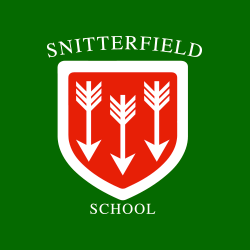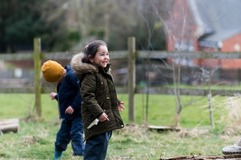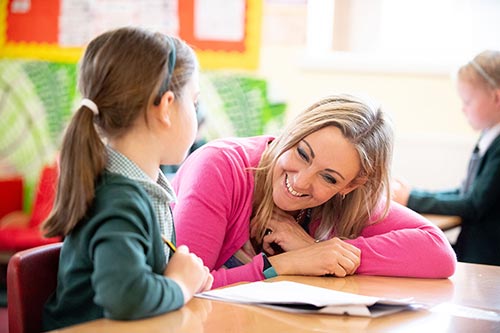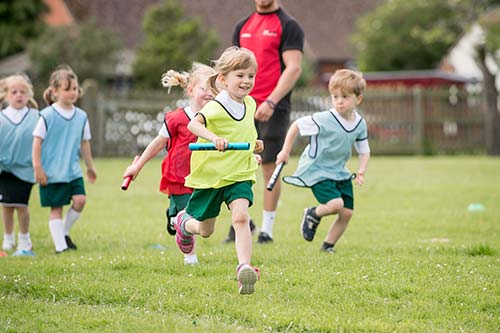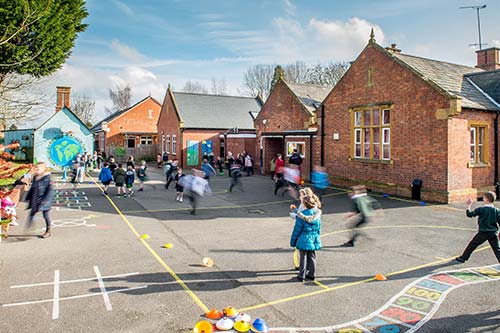What can you expect when your child starts Primary School?
The Reception class is about much more than colours and shapes, numbers and letters. This is the year that your child becomes ‘school-ready’; developing their independence, confidence, resilience and curiosity. It’s an exciting time, for children and parents, as their Primary school career begins.
As parents, we can feel anxious as our child begins ‘big school’ – how will they cope in a big classroom and in a large playground? Will they make friends easily? But very soon most children adjust to their exciting new environment.
What will my child do in reception?
This year your child will continue to learn by doing things for themselves, by exploring and investigating, watching and listening, talking and discussing, creating and communicating — in other words — playing. Play is children’s work and playing hard is very tiring! Your child may be really exhausted and perhaps a bit grumpy when they come home! If they don’t want to talk about their day straight away, don’t worry, they will gradually let you into their new world as time goes by. Play can also be very messy as your child will be learning both inside the classroom with sand, water, paint, but also in the outdoors with mud, leaves etc. so you can expect some mucky clothes at the end of the day!
At the September Welcome Meeting, Miss Findlay runs through the curriculum for Reception children which is referred to as the Early Years Foundation Stage (EYFS) and is broken down into 3 prime aspects and 4 specific areas of learning.
Personal, Social and Emotional Development
One of the prime aspects of your child’s first year at school will be a focus on their personal, social and emotional development, and Miss Findlay will be aiming to give them a good start to their school experience by helping them form positive relationships, build confidence and self-awareness, as well as manage their feelings and behaviour.
Physical Development
Physical development is important too: you will hopefully notice that they are starting to move more confidently and to understand how to look after themselves and be healthy. Physical development incorporates both gross and fine motor skills. As such handwriting and the formation of letters in the correct sequence of movements is included here.
Communication and Language
The last prime area is all about speaking, listening and understanding. Children learn through speaking and listening first and foremost, and this year you may notice your child communicating in a variety of ways at school — for example, through stories, in conversations with adults and their friends, or through facial expression, movement or dance.
Specific Areas of Learning
In Literacy your child will learn to tell stories, recognise letters and sounds and segment and blend words in order to learn to read and write. Many parents are daunted by this but there’s no need to be! The school follows the phonics scheme ‘Letters and Sounds’, a resource published by the Department for Eduacation and Skills, which uses the 44 phonics sounds, diagraphs and trigraphs (two or three letters making one sound — eg sh, ai, igh, air etc) to read and spell words. Don’t worry — whilst the scheme progress quickly you will be given lots of helpful advice along the way! In Mathematics, the children will cover understanding of number and place value, simple calculations, shapes, spaces, simple measuring and mathematical language.
In Understanding the World children learn about similarities and differences in their world and make simple observations. They will explore differences in people and communities, and learn about how we can use different forms of technology in our world. Finally, imagination and creativity are championed in the area of Expressive Art and Design. Your child will explore different media and materials and be encouraged to use their imagination in a range of different experiences.
The key thing to remember here is that your child learns holistically. In other words, most of the time they will be learning all seven areas of learning together, in a fairly jumbled way. So if your child spends most of his time in the sand area there’s no need for concern! They may well be covering all kinds of important learning; working with different materials shapes, quantity and volume, creating imaginative worlds, feeling different textures, and even developing motor skills and strength for writing!
How can I help my child in Reception?
Talking and listening
Two-way communication is really important for Reception children — not to mention their anxious parents! If you have any worries or concerns do please speak to Miss Findlay about them. By talking concerns through together everyone can benefit and learn more about your child.
Your child will be informally observed throughout their time in Reception and Miss Findlay will use the observations to assess your child’s learning. You can do this too by making simple informal observations at home; note any WOW Moments or Magic Moments and let Miss Findlay know – they can be added to your child’s Learning Journey.
Read, read, read
Read to your child and encourage them to read to you. Read anything and everything, not just the reading scheme books. Real books, with pictures, rhyme and enjoyable stories are crucial here. Try to encourage your child to talk about the pictures, or to make predictions about what will happen next. It’s most important for your child to enjoy reading above all, so try to relax.
Encourage your child to recognise and read print when you are out shopping, on the bus or at the park. Most children can recognise the Golden M for McDonald’s a mile away!
Fill in their Reading Diary each time you read with your child or go through their phonics book. This can be a really useful communication tool, so the more info you provide the better!
Help with phonics
Talk to your child about individual letters and their sounds. Singing songs and nursery rhymes really helps them to find out more about letters and sounds. Play I-spy when you go out (using the sound the letter makes, rather than its name).
Talk numbers
There are all sorts of ways to encourage number recognition. Try to involve your child in using numbers at home by singing number rhymes and songs or by encouraging them to recognise and read numbers when you are in the car. When shopping, ask them to select the number of apples or bananas you need — they’re helping you out, and learning at the same time.
Getting dressed independently
And finally, (and on a more practical note!), it is really useful if you can encourage your child can have a go at dressing themselves at home so that they can do themselves during the day. It’s often quite time-consuming for staff to have to do up 15 zips on wriggly children bursting to go outside!
Here are some free Reception resources for you to take a look at:
- You can find out more about the sounds of letters and digraphs on our Phonics made easy page.
2. Find out how to encourage number recognition on our Early maths skills page.
3. Choose one of our free eBooks to read together Boris Starts School might be a good one to read together with your child as they begin to prepare for big school.
4. If you need help with choosing books for your child, you might find our Choosing books guide useful.
5. And finally, have a look at the video by Julia Donaldson on reading to your child.
